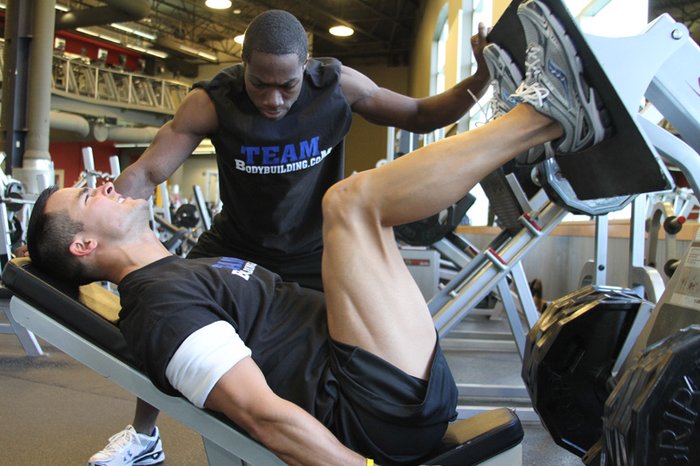
Exercise Daily – Are you familiar with that feeling when you’re diligently hitting the gym, pouring your energy into each workout, only to find yourself stuck in a frustrating fitness plateau? It’s like hitting a brick wall – your progress screeches to a halt, leaving you wondering what went wrong. But fear not; this is a common hurdle many fitness enthusiasts encounter. Let’s discover the 6 Ways to Smash Your Workout Slump. Breaking through these plateaus is critical to unlocking continuous gains and keeping your motivation high.
One effective strategy to overcome this hurdle is understanding the concept of hitting a plateau in your training journey. When you consistently push your body week after week, it adapts to its demands. This adaptation process is natural and expected, but it can also lead to a plateau in your progress. Whether you aim to build muscle, increase strength, or improve endurance, hitting a plateau can be disheartening. However, it’s essential to recognize that it’s not a dead-end – it’s simply a sign that your body is adjusting to the demands of your workouts.
Plateaus in Fitness
You can implement several effective ways into your exercise routine to smash through your workout slump and reignite your fitness progress. One approach is to vary the number of reps you perform during your workouts.
What is a Plateau?
Before we delve into the strategies to overcome a fitness plateau, let’s first understand what it means. A plateau refers to a period in your fitness journey where you experience a lack of progress despite your continued efforts. It’s as if your body has hit a roadblock, and no matter how hard you work, you struggle to see noticeable improvements in strength, muscle growth, or overall fitness.
If you’ve been sticking to the same rep range week after week, your muscles may have grown accustomed to the routine, leading to stagnation in your progress. Incorporating lower or higher rep ranges into your training allows you to challenge your muscles in new ways, stimulating growth and pushing past plateaus.

Why Plateaus Occur
Plateaus can happen for a variety of reasons. One common cause is the body’s remarkable ability to adapt. Your muscles become accustomed to the routine when you consistently perform the same exercises with the same weight and repetitions. As a result, they no longer need to work as hard to complete the exercises, leading to a plateau in their progress.
Another effective strategy is to adjust your workout intensity. Suppose you’ve been consistently lifting the same weight or performing the same exercises with the same level of intensity. In that case, your body may have reached a point of adaptation where further progress is limited.
To break through this barrier, consider increasing the intensity of your workouts by lifting heavier weights, reducing rest periods, or incorporating high-intensity interval training (HIIT) into your routine. You can stimulate new growth and see results by pushing your body beyond its comfort zone.
Common Signs of a Plateau
Recognizing the signs of a fitness plateau is crucial in overcoming it. Some common indicators include a lack of strength gains, stagnant muscle growth, decreased energy levels, and frustration or lack of motivation. If you notice these signs, chances are you’ve hit a workout plateau, and it’s time to take action.
Breaking Through a Fitness Plateau
Listening to Your Body
When overcoming a plateau, one of the most important things you can do is listen to your body. Pay attention to how you feel during workouts and assess your energy levels. If you’re constantly tired or lacking motivation, it may be a sign that you need to adjust your training program.
Evaluating Your Workout Routine
To break through a plateau, evaluating your current workout routine is essential. Assess the exercises you’re performing, the number of sets and repetitions, and the overall structure of your training program. Look for areas where you can introduce changes, such as increasing the intensity, incorporating new exercises, or targeting different muscle groups.
Incorporating Progressive Overload
Progressive overload is a fundamental principle in weight training that can help you overcome plateaus and continue making progress. It involves gradually increasing the demands on your muscles over time. This can be achieved by adding more weight, increasing the number of repetitions, or reducing the rest time between sets. You stimulate growth and push past the plateau by challenging your muscles in new ways.
Trying Different Exercises and Techniques
Another effective strategy to break through a fitness plateau is introducing variety into your workout routine. Trying different exercises and techniques can target your muscles in new ways, shocking them out of their comfort zone. For example, if you’ve been primarily focusing on the bench press for chest development, try incorporating exercises like dumbbell flyes or push-ups to engage your muscles from different angles and stimulate further growth.
Adjusting Your Diet and Rest
Sometimes, hitting a workout plateau can signal that your body isn’t receiving the right fuel or enough time to recover and repair. Evaluate your diet and ensure you consume adequate nutrients to support your fitness goals. Additionally, prioritize rest and recovery by incorporating rest days into your routine. Remember, progress happens outside the gym when your body has time to adapt and grow stronger.
Seeking Professional Guidance
If you’ve tried various strategies and still find yourself stuck in a fitness rut, seeking professional guidance can be immensely helpful. A personal trainer or fitness coach can provide expert advice tailored to your needs. They can assess your current routine, identify areas for improvement, and design a customized workout program that will get you back on track toward achieving your fitness goals.

Conclusion
Hitting a fitness plateau can be frustrating, but it doesn’t have to be the end of your progress. By implementing the strategies discussed in this article, such as listening to your body, evaluating your workout routine, incorporating progressive overload, trying different exercises and techniques, adjusting your diet and rest, and seeking professional guidance, you can break through that plateau and continue your fitness journey with renewed vigor. Remember, fitness plateaus are a natural part of the process, and overcoming them is a testament to your dedication and determination. So, embrace the challenge, stay consistent, and let nothing hinder achieving your fitness goals.
FAQs – 6 Ways to Smash Your Workout Slump
Q: How long does a fitness plateau typically last?
A: Fitness plateaus can vary in duration, but they generally last for a few weeks to a few months. The key is to stay persistent and try different strategies until you start seeing progress again.
Q: Can I still make progress while in a plateau?
A: While progress may be slower during a plateau, it doesn’t mean you can’t make any gains. Focus on maintaining your current strength and fitness level while implementing strategies to break the plateau.
Q: Should I change entirely my workout routine when facing a plateau?
A: You don’t have to overhaul your routine completely, but making strategic adjustments can be beneficial. Introduce new exercises, increase intensity, and incorporate different training techniques to challenge your muscles in new ways.
Q: How important is rest and recovery in overcoming a plateau?
A: Rest and recovery are crucial in overcoming plateaus. Giving your body time to repair and recharge allows your muscles to adapt and grow stronger. Make sure to prioritize adequate sleep and incorporate rest days into your routine.
Q: Can a plateau be a sign of overtraining?
A: Yes, plateaus can be a sign of overtraining. Progress can stall when you push your body too hard without giving it enough time to recover. Be mindful of your training volume and listen to your body’s signals to avoid overtraining.




